Before the Outer Ring Road cut through it in the early 2000’s, Doddanekundi was an inaccessible village, mostly devoid of humans. A local legend goes that ‘Doddanekundi’ translates to ‘big fox is here’ in Telugu, perhaps the most spoken language hereabouts. Since agricultural fields, expansive plantations and large open areas dominated even as late as the early 2000s, the tale of big foxes — most likely jackals — could well be true. And then, when Bangalore grew as it did into Bengaluru, Doddanekundi Lake is perhaps all that is left standing today amidst all the wilderness that once was.
The greenery preserved by the public sector unit Hindustan Aeronautics Limited (HAL) is what got me started on bird-watching in 2015. In lands adjacent to the HAL airport in Yemalur, hovering Black-winged Kites and Common Kestrels were a common sight. There were coconut trees with hollows housing Indian Rollers, woodpeckers, mynas, parakeets and owlets. Even today, the HAL quarters in Marathahalli is a bird haven. Visits to Kaikondrahalli Lake in 2016 got me curious about the wetland near home. I began going to the ‘rejuvenated’ Doddanekundi Lake, all new, with a walking track, two islands, and fencing. A railway track passes along one side of the walking track. The land in between is wild, with a bit of grassland, some acacia trees, silver oaks, teak trees and other shrubs.
2016 – Exploring Doddanekundi
September of 2016 brought heavy rains to Doddanekundi. Shallow water with scattered lake vegetation was the habitat I witnessed on my first visit. On a coconut palm by the edge of the lake, the silhouette of a bird got me thinking: “Is that what I think it is? Nah! It must be a cormorant.”
Moving closer for a better view, I saw the unmistakable features of a hornbill — trademark bill, casque and long tail. It turned its head slowly, as Indian Grey Hornbills do. These birds are seen only in certain pockets of Bangalore. On the same day, an Asian Brown Flycatcher chose a perch to chase after insects. I gave little attention to ducks; I learnt of the migrant waterfowl from other checklists and looked for them.


By December, the Garganey were present in the hundreds, with about 5-6 Northern Shovellers. Outside the ‘lake limits’, a particularly large stretch had grasslands interspersed with shrubs while another smaller parcel had a similar habitat. In front of the huge Ficus tree by the temple was a piece of land with a smaller Ficus tree amidst a few Singapore Cherry, acacia and lantana bushes. These were great bird habitats. Bee-eaters, white-eyes and bulbuls were aplenty. I loved watching Green Bee-eaters hunt and Ashy Prinias skulk around. Munias, weavers and pipits foraged in good numbers. Streaked Weavers were occasionally seen in the reeds by the lake. The different plumages on the Glossy Ibises fascinated me. Among other interesting sightings were Rufous Treepies, a Red-breasted Flycatcher, breeding Shikras and many warblers (identifying them is hard).
2017 – Disaster strikes
The shallow water attracted fish-eating birds in large numbers. Huge flocks of cormorants were first to show up. Swimming as a unit, a few of them disappeared underwater and resurfaced with fish. These birds take their fishing seriously and even dry their wings under the sun.
Watching Oriental Darters stab and gulp fish never got boring. Pied Kingfishers were present for most of 2017. I loved watching them hover and dive. Garganey were present by the hundreds.
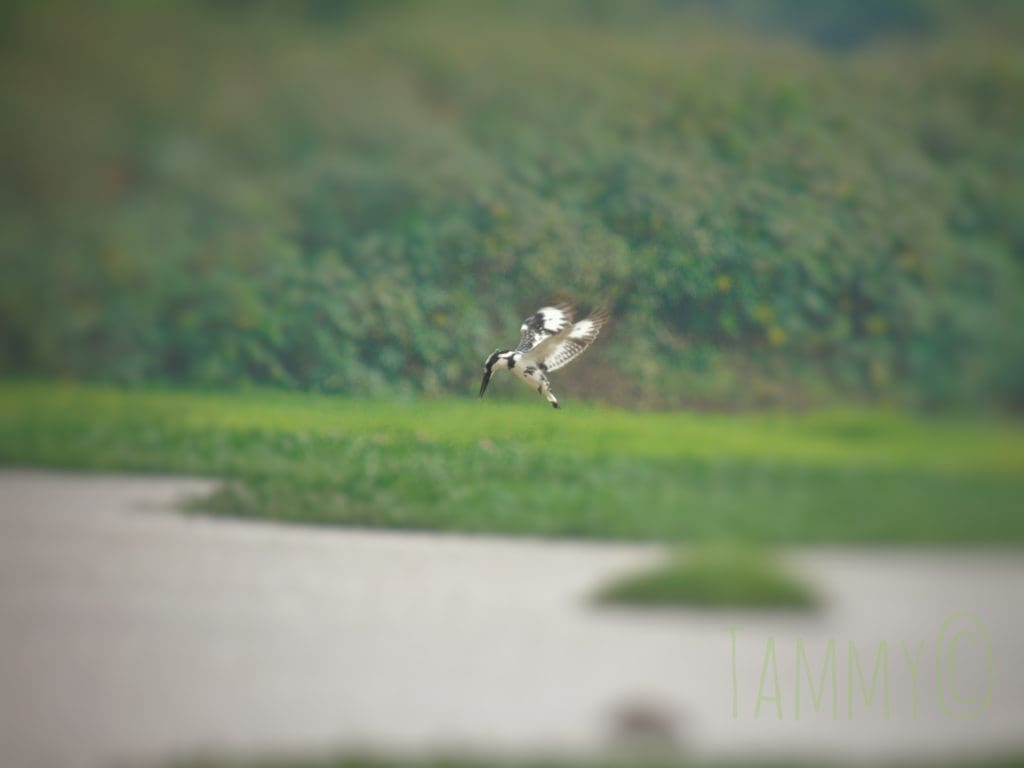
At the end of January, a call drew my attention, the source flying high over silver oaks until it finally settled on an acacia. A male Black-naped Monarch, it was regularly seen until the end of March. A Barn Owl was seen on a mango tree one February morning. It roosted for a day.
A White-bellied Drongo was seen hunting insects in March. It didn’t have a rictal spot (like the Black Drongo) and the belly was solid white. A dramatic aerial encounter between Black and Brahminy Kites ended up with the Black Kite seemingly begging the Brahminy Kite for forgiveness on the perch they both settled on. They stayed in the same position for a while; it was strange.

By May, with more lake vegetation and exposed banks, coots, jacanas and swamphens were aplenty. Painted Storks arrived to catch huge fish, while Black-winged Stilts appeared making their loud calls. Pied Bushchat parents fed their fledgelings.
By the third week of May, there were more than 50 Black-winged Stilts. A pair was seen mating and some pairs sitting on what might have been nests. Their numbers kept increasing as the water level dropped. Pairs were seen chasing away Black Kites, a typical breeding behaviour.
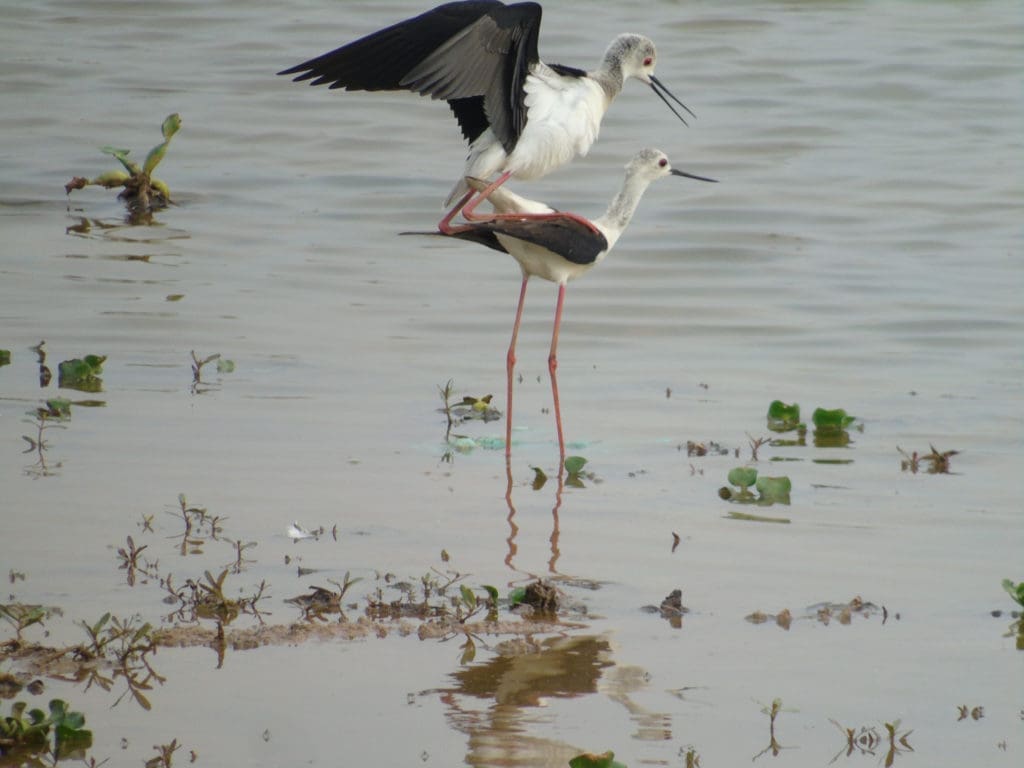
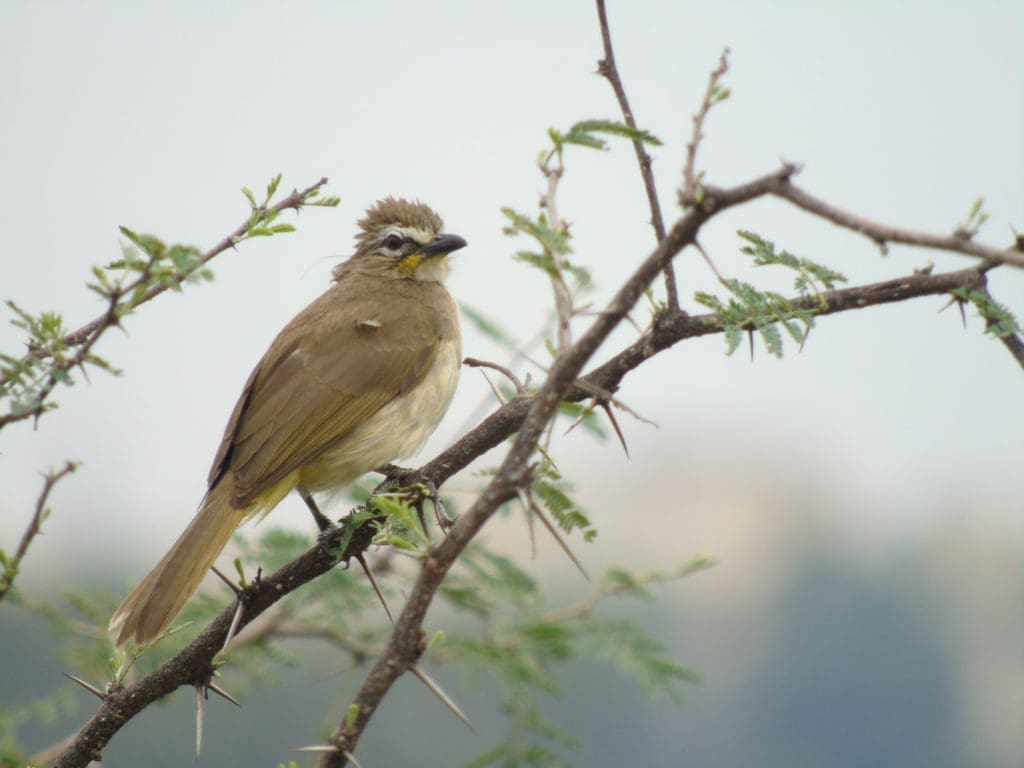

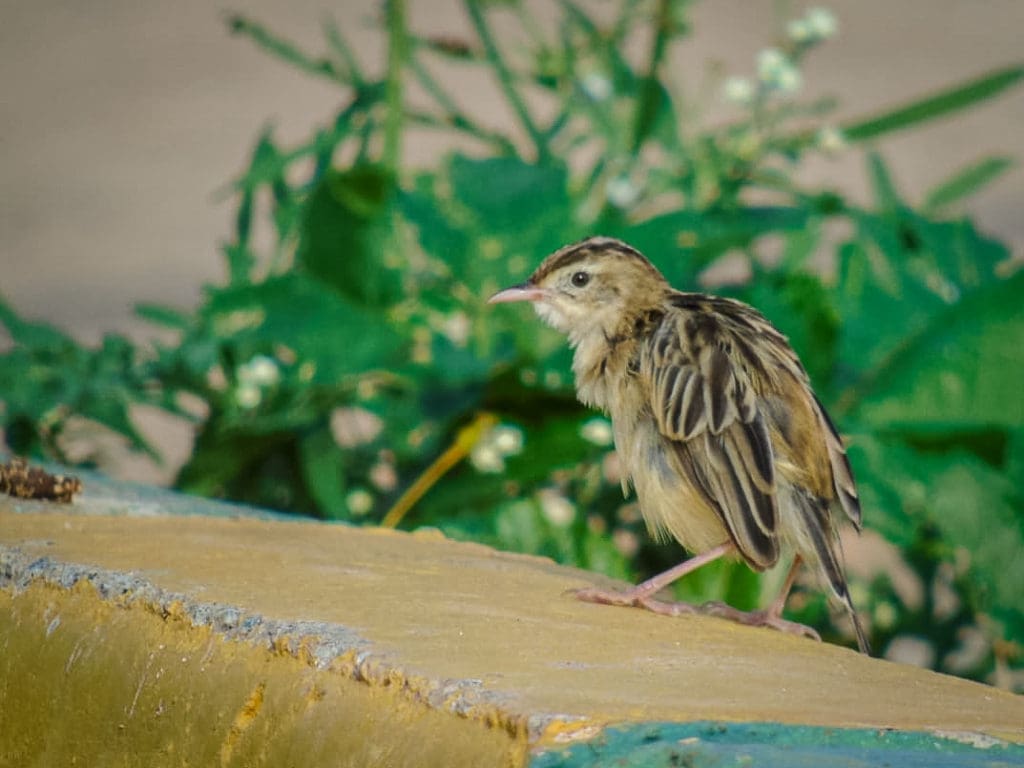
At dusk, flocks of Glossy Ibis flew by the lake, making for spectacular views. One morning in May, Red-whiskered Bulbuls and Indian White-eyes were feeding on lantana fruit. A gurgling version of a bulbul call led me to a White-browed Bulbul, which was partaking of the feeding frenzy. I discovered the many Spotted Owlet roost sites at the lake and became accustomed to seeing at least two owlets on every visit ever since.
In June, there were a few rains, attracting lots of munias and weavers to the shrubbery and grasslands outside the lake. Two Spot-billed Pelicans showed up, fishing alongside the Painted Storks. I spotted Zitting Cisticolas by their scissor-cut-like calls and movement in flight. There were many across the lake. Pelican numbers grew to 25 by July.
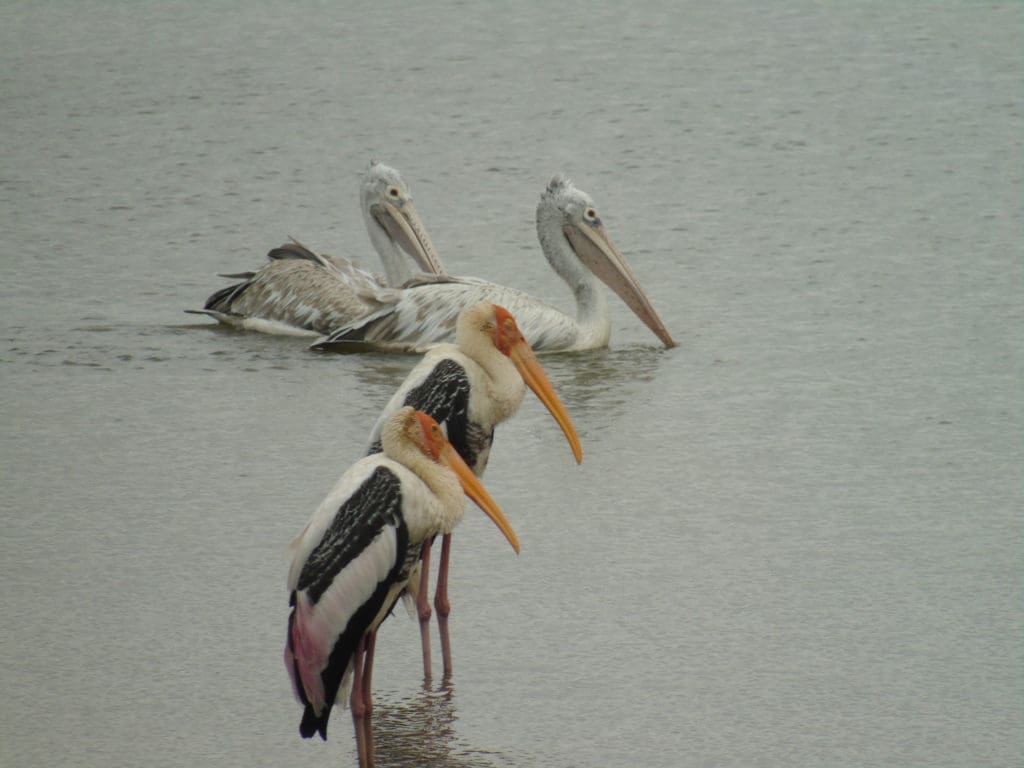
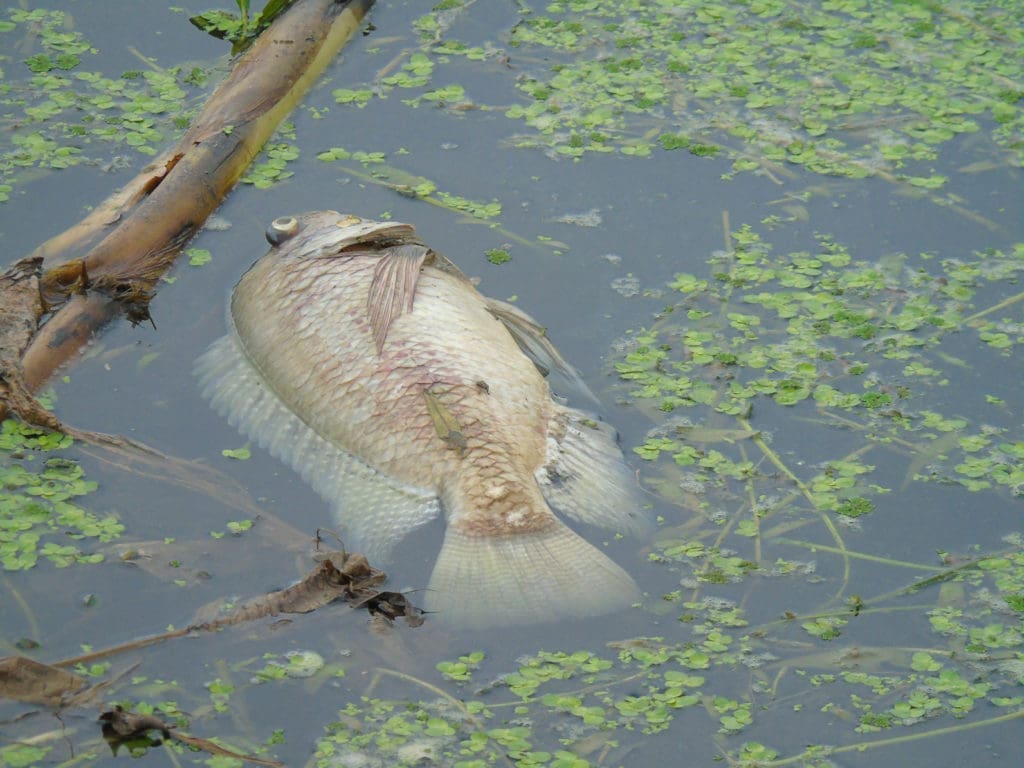
I saw my first Loten’s Sunbird on a Passiflora flower. According to a fellow birder, they were always present here, and I had always mistaken them to be Purple Sunbirds and was honestly ignorant of this species until that day. Loten’s Sunbirds have a longer and more curved beak, and their plumage is a bit different.
August was amazing. Sunbirds made plenty of nests on acacias around the lake. As in July, water birds were seen in good numbers.
Heavy downpours lashed Bengaluru in September. The sewage ring drain around Doddanekundi Lake was breached to prevent flooding of the villages around, letting all the rain and sewage into the lake. Paradise was lost. The flooding of the lake meant that the shallow water habitat was gone, and with it went the opportunity of the stilts to make babies. The sudden water inflow also submerged some acacia and the rest of the lake vegetation. Over the next few weeks, the lake stank and dead fish floated along the banks (I counted 50).

The authorities hadn’t addressed this problem during rejuvenation. Around the same time, the smaller shrubland around the lake was cleared for construction — it was curtains for some birds in a portion of the lake. All this got me angry as is evident from my eBird checklists. Thankfully, people from the local lake community, Nekkundi Tank Rejuvenation Association (NeTRA), managed to stop sewage inflow. Nature did the rest. Water hyacinth covered the lake. While most water birds disappeared, I paid more attention to the other birds.
Brown Shrikes and Bay-backed Shrikes arrived by the end of September, and a good number of them were seen hunting insects. A Brown Shrike was once seen with a scorpion kill. A few Tree Pipits were seen one December morning, but a Common Cuckoo hunting hairy brown caterpillars distracted us, a ridiculous sighting for this location. Four birds were recorded in 2016 by another birder.
There was a spot in the lake where 20-odd House Sparrows thrived. They partially depended on shrubs and open earth in an adjacent layout. A friend and I got fired up and wanted to start a nest box campaign. We couldn’t work as hard as we would’ve liked and it didn’t kick off.
2018 – the lake recovers
Four months after the sewage flow was stopped, the lake began to recover slowly. The water level started to dip again, bringing back stilts, cormorants and some migratory Garganey. Though they were not there in glorious numbers as in 2017, it was good to see them back. A couple of Western Marsh Harriers took turns to scatter birds all through winter. On a warm February morning, a Booted Eagle had appeared and was flying around. Unperturbed by a following kite, it dive-bombed a Grey-headed Swamphen (which escaped), flushing most birds in the vicinity. Harriers and kites soon chased away the eagle.
Cuckoos took over the lake in March — four Pied Cuckoos, one Grey-bellied Cuckoo and four Common Hawk-cuckoos could be seen hunting the abundant hairy orange caterpillars. All of them stuck to one area through their stay; it was a cuckoo bonanza. Another March morning, a raptor swiftly perched on a coconut tree. My guess was it was a Shikra, but it turned out to be a Common Kestrel. It later hovered over the lake and perched on a tree on the island.

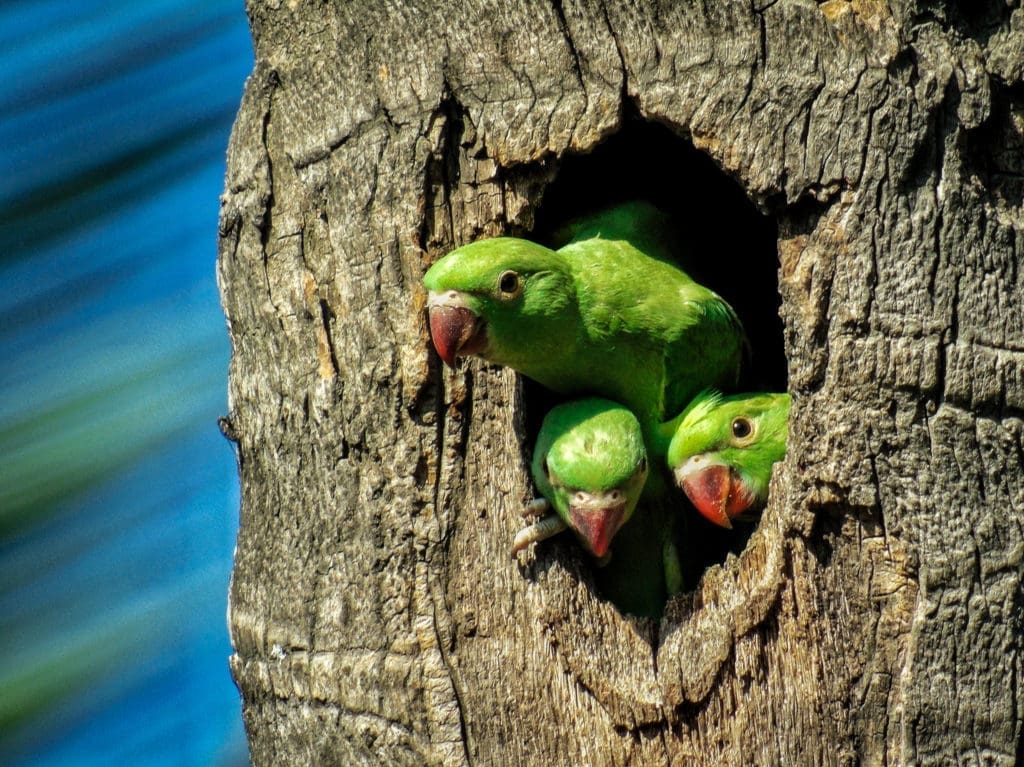
In another tree, Rose-ringed Parakeets had four chicks. While the parent birds were away, the chicks took turns watching the world outside from their hole.
March was good, with sightings of warblers, shrikes, cuckoos, pipits, wagtails, a Brahminy Kite with a fish kill, Zitting Cisticolas and more. I also saw a lot of snakes between the lake and the railway track. I even saw one with a raised hood.
In May, lots of Little Cormorants and Great Cormorants could be seen fishing together. Herons and egrets were seen in beautiful breeding plumage. Hornbills were seen much more frequently.
From June to September, I visited the lake less frequently. At the end of October, a pair of passing Blue-tailed Bee-eaters came down to the lake, perched momentarily on an acacia, and flew away. The usual rains didn’t take place in Bangalore. The banks dried up and, strangely, no migrant ducks came by, except for a few Common Teals. Rosy Starlings turned up in the hundreds by December. By the end of the year, five grey hornbills were seen together near the railway track. The sparrow population was stable throughout this year and probably still is — a big positive.
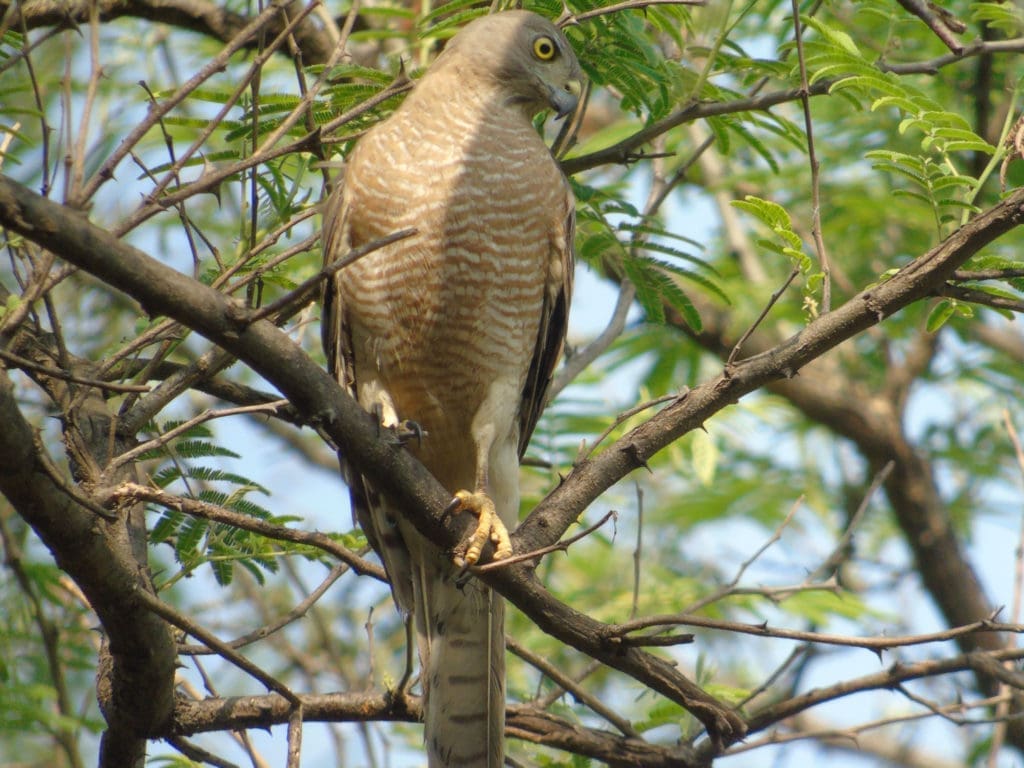
2019 – Dry days
Save for one visit in January (where I glimpsed a Little Ringed Plover), I didn’t visit Doddanekundi Lake again till the end of May. The lake had dried up completely, leaving only small, scattered pools of standing water. I observed a Shikra feasting on a Short-nosed Fruit Bat — poor bat, but happy Shikra, I guess.
There were more Zitting Cisticolas, Ashy Prinias and other grass/ reed specialists. By June, a couple of Indian Rollers were sighted; they must have found the dry lake to be a more suitable habitat. Over the next few months, other birders also spotted them.
The dry months continued until October, when heavy rains wreaked havoc. The inlets were breached again to prevent villages from flooding, and this allowed a mixture of stormwater and sewage into the lake. I wasn’t the only one bothered as I learned through a lake conservation Whatsapp group. We tried to nudge the authorities, but we knew the inlets wouldn’t be closed until the end of the rainy season.
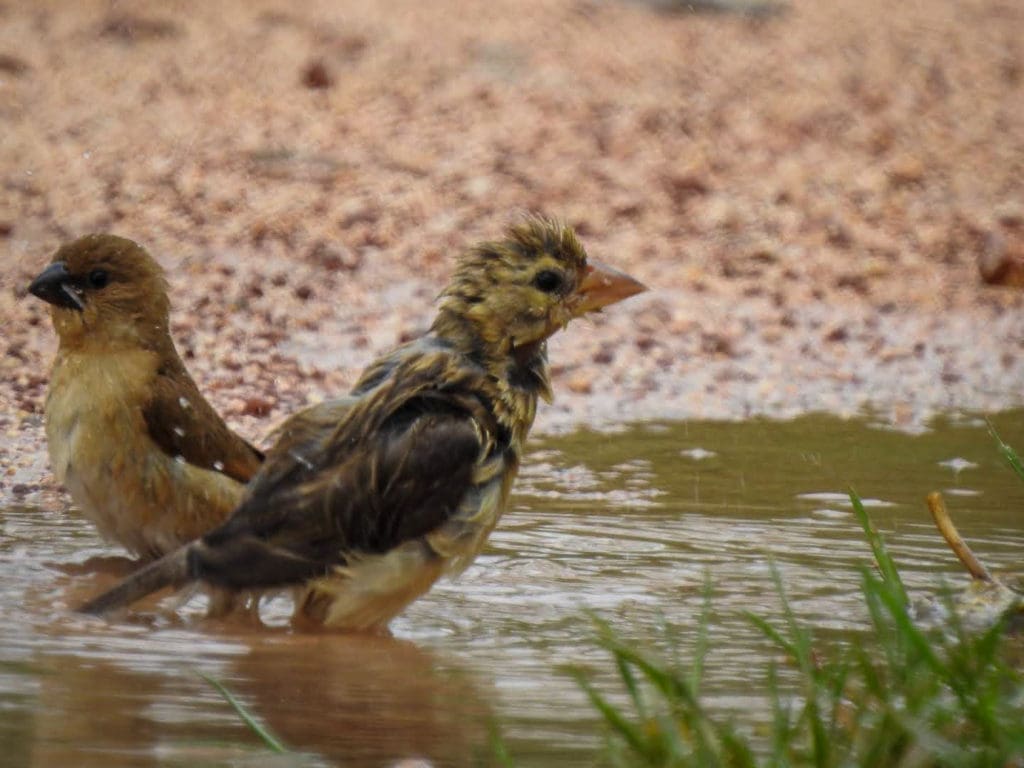
Two days after the inlet breached, the water level remained high. It was nice to see a few Whiskered Terns skimming the lake. In the muddy pools on the walking track, munias, sparrows, mynas and weavers bathed. Rufous Treepies were seen on the silver oaks, uttering their metallic calls.
About a week into the inlet breach, a film of algae covered the lake. The inflow of sewage and rainwater into the lake continued. We started an online campaign demanding a permanent fix to the problem (a sewage treatment plant). NeTRA kept persuading the authorities and, after a month, the inlets were closed. The petition garnered a lot of newspaper and online attention. We tried sending it to the BBMP Commissioner, but their responses were disappointing. I didn’t visit Doddanekundi Lake in November, anticipating a complete absence of birds, dirty smell and some eco-anxiety.
When I went to the lake in December, I realized that I was never more wrong. There was plenty of birdlife, both migratory and local. Lesser Whistling Ducks and Northern Shovellers were present in numbers I had not seen before, but this was only the beginning. The lake strangely became a bird-hub of sorts in the early months of 2020.

2020 – Unforeseen bliss
January was mental. The Lesser Whistling Duck and Shoveller flocks kept growing in size each day. A few Garganey arrived. On the temple tree, a small flock of Alexandrine Parakeets began roosting, their loud calls echoed in the early mornings.

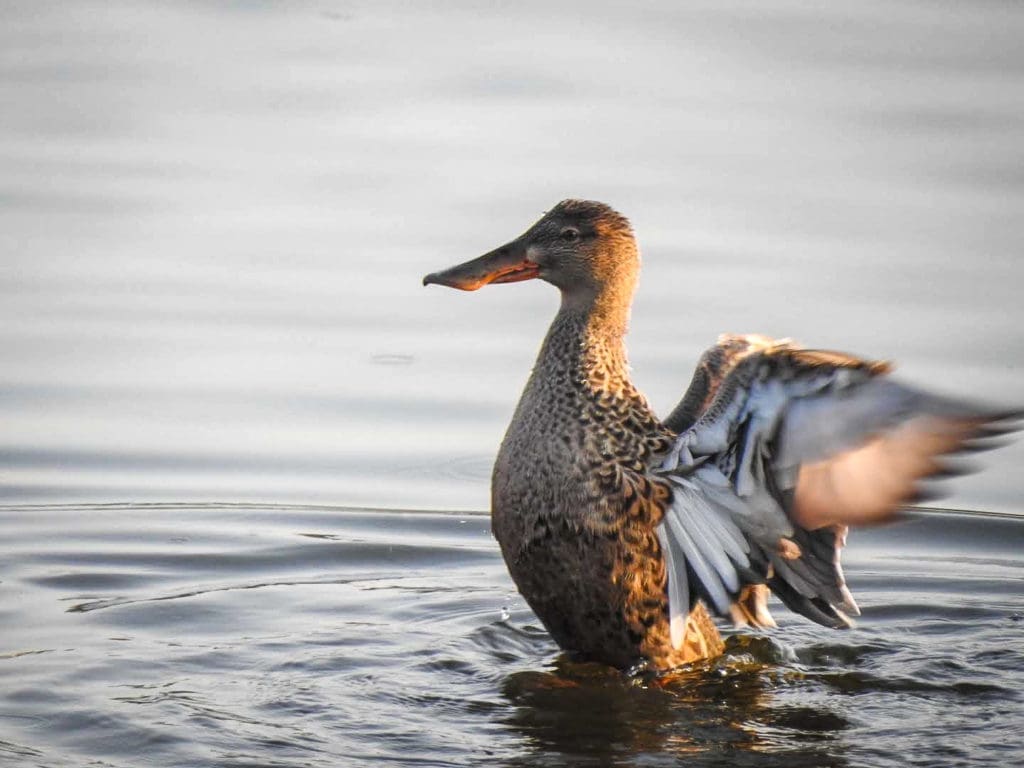
In the middle of January, a fellow birder spotted four Grey-headed Lapwings. These birds, unusual visitors to Bangalore, became celebrities, attracting bird enthusiasts from all around the city. I got good views of them a few times on their usual rock perch. A Greater Spotted Eagle was usually seen scanning the lake like a king from its perch on the island. It occasionally took flight, terrorising and flushing other birds with its intimidating presence. Four Cotton Pygmy Geese were occasionally seen browsing the lake vegetation. By the end of February, there were thousands of Shovellers and about a hundred Lesser Whistling Ducks, 50-odd Indian Spot-billed Ducks and more than 300 Garganey.
There was joy in the air as the local people also began to observe the birds keenly. While one half of the lake was covered by water hyacinth, birds covered the other half. I particularly enjoyed their aerial displays. Shovellers and Garganey made quick circuits around the lake, while Lesser Whistling Ducks made slower circuits, making whistling calls. Marsh Harriers and Booted Eagles flushed the birds frequently and exposed the sheer number of waterfowl.
Common Coots and swamphens had nests and chicks everywhere. By the end of the migratory season, the coronavirus pandemic gripped the country and the lockdown was imposed. Doddanekundi Lake was closed to the public.
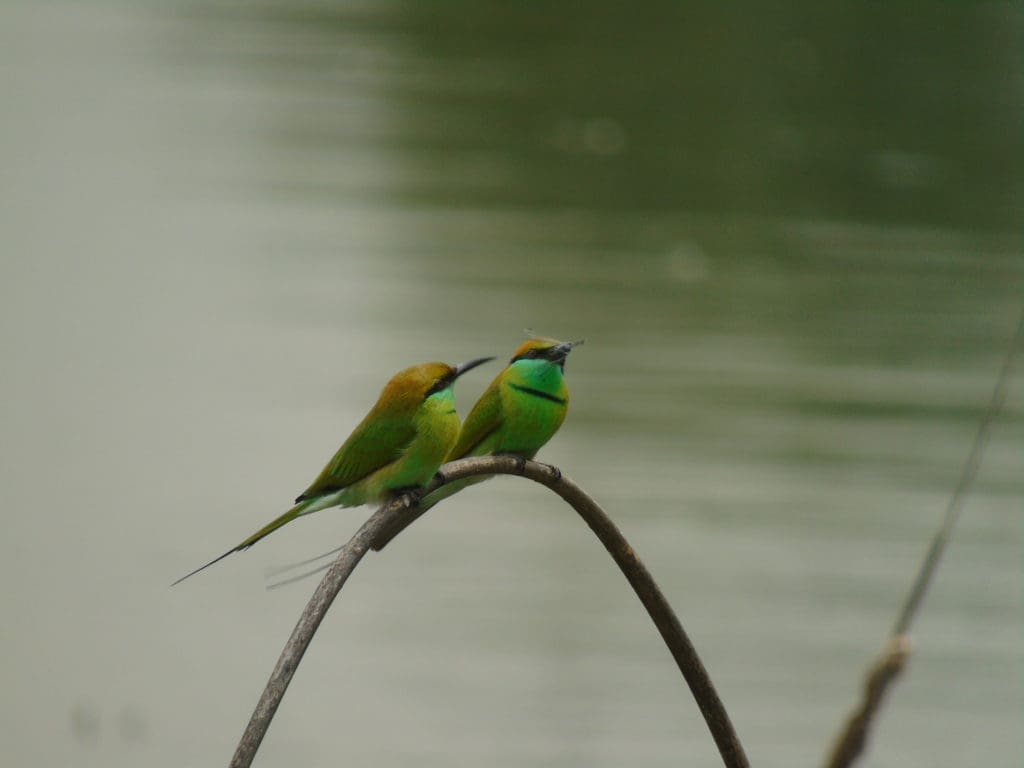
I occasionally go to the temple tree to watch hornbills, parakeets, bushchats, mynas and barbets. This is their breeding season and their behaviour is quite different now. Birds can be seen feeding their partners, and competition for nesting spots leads to hostile behaviour to other species. In case of the hornbill, I stopped seeing the female suddenly. Only the male has been visible for the last few weeks, indicating that maybe it has sealed itself in some tree cavity, and hopefully incubating eggs. While 2020 has been brilliant so far, the fish-eating birds like Pied Kingfishers and cormorants/darters/storks have been absent.
Endnote – saving Doddanekundi Lake
From my observation (not necessarily a scientific perspective), a seasonally drying lake is a good sign, especially given that sewage has to flow every year during the heavy rains. Complete drying up isn’t ideal, but that is up to the rain. An STP (as demanded in our petition) might change the diversity here drastically with deep waters throughout the year. It might also take up a lot of space and therefore may not be the best approach to save this lake. The natural wetland treatment idea that NeTRA is working on might just be the best long-term solution for both neutralising seasonal inflow of sewage and preventing the lake from completely drying up.
All pictures by Praveen Tangirala

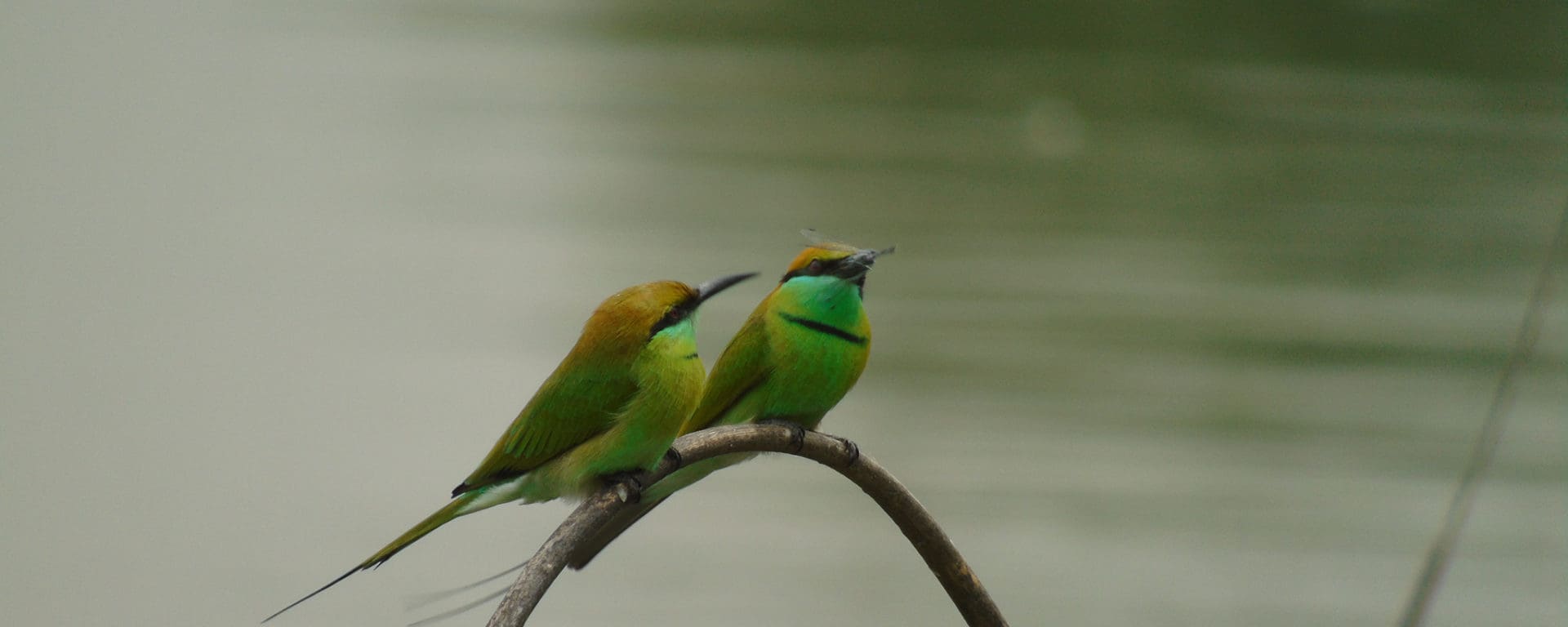
Very nice and informative blog. All the birds lover will be very much benefitted from this article. Pictures are also awesome. Thanks for posting. I am a bird photographer and bird watcher from Kolkata. I write a blog on Indian birds identification.
Very Good clicks over a period of time. Really appreciate it.
Very nice writeup Praveen. Black-naped monarch is an absolute surprise here.
It was a fantastic article to go through. Was like a journey and quite inspiring . Keep writing.
Really liked the captures and the timeline. Congratulations..
Praveen, Nice work. Really happy to see such an article. I also stay here for last 18 years and seen all that happened to our lake. Nice clicks too.
Nice write Up. Ive always enjoyed birding there and will continue to do so.